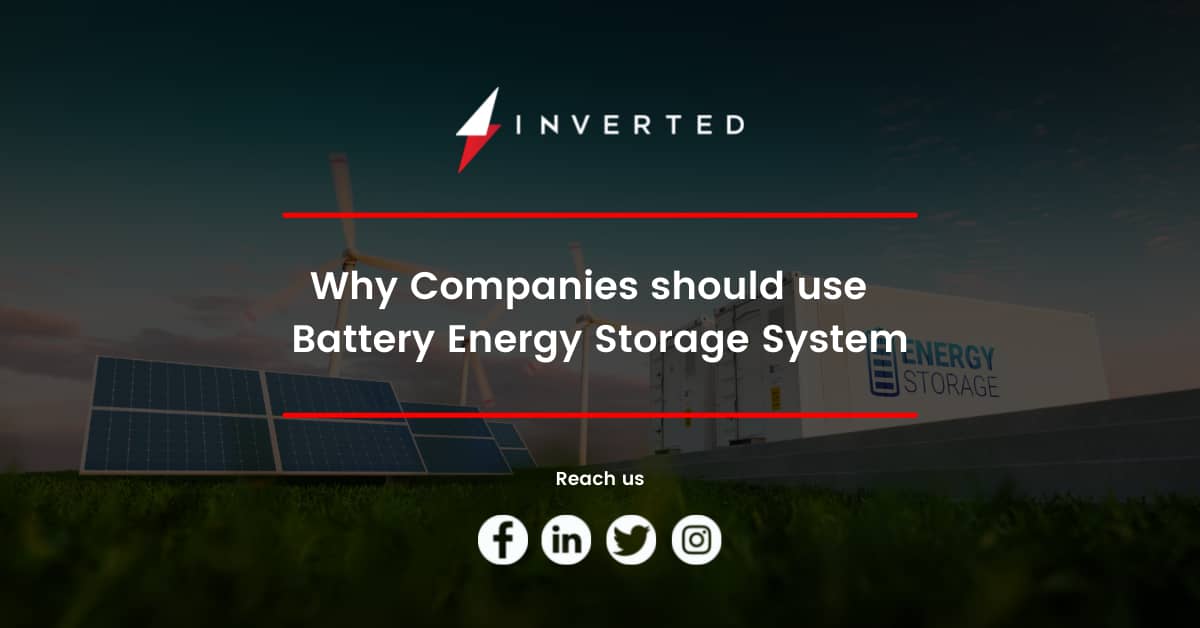
In terms of research, innovation, and investments, the energy sector has been on the top in the last decade. In the last 10 years, the cost of lithium-ion batteries has been declined by almost 85%. This has lead to the rise of the EV sector and the adoption of Battery Energy Storage Systems by many companies.
In this blog, we will explore what benefits companies can get if they adopt the battery energy storage system. We will be exploring the benefits for the global power consumers so there might be certain conditions that will not be applicable for the Indian market.
If someone has businesses with an annual electricity bill equal to or more than 40 lakh, then they need to consider battery energy storage as battery energy storage has both financial and environmental benefits. The best thing about these BESS is that if they are connected with the grid then with great return on investment, they become the energy sales asset.
Economical Benefits
To understand the economical benefits of the Battery storage system we have to take a re-route through solar energy. If the primary power source of the consumer is solar energy, in that case, the surplus power which is generated will be used to charge the batteries first. Once the batteries are fully charged then the surplus power will be exported to the grid. The battery will be used at a time when there is a power cut due to bad weather or any connection disruption.
For every extra unit of power which the consumer is exporting back to the grid, the consumer will get paid for that by the govt.
Although the payment depends on multiple factors like what if the connection is based on net metering or gross metering. Both have different tariff parameters whose information you can get from the local DISCOM.
Avoiding Peak Demand Charges
If we are talking about the variable electricity consumption charges based on high and low demand for electricity then please understand this kind of process is not in use in India.
In countries like the UK, tariff varies with the demand. If the demand is high it means consumers are consuming a lot more energy like in the daytime in summers. At that time the tariff will be different, which means the consumers have to pay more for the electricity consumption.
But this can easily be avoided by using the battery energy storage system. At peak times, the connection can be a switch from the grid to the battery storage. And once the peak hours are over, the connection can be switched back to the grid which will charge the batteries.
Local Micro-Grid
It is not necessary that companies and industries have to export the surplus power back to the grid. That same power can be shared with the local community via a local power grid.
Microgrids are independent grids with their own power distribution network it means they don’t use the national grid power distribution network.
Let’s assume that a company is generating 4-5 units of power in surplus. Then that power can be sold to the local community. That local community can be a local market area or a school or a community center. Those local communities get power from the national grid at the commercial rate. Via the micro-grid, they can get power at a mutually agreed tariff which is generally less than the tariff decided by the govt. or DISCOMs. In this way, not only the companies will be able to generate revenue out of that surplus electricity but also be helping the local community.
Trading with National Grid as Energy Arbitrage
Energy Arbitrage means buying the electricity when the demand is low and selling the same power back to the national grid when the demand is high or at peak hours. Again this is not practiced in India. As we know that at the peak hours the tariff is at the higher side and that applies to the power export as well. It means if any customer is feeding power back to the grid when the demand is high then the customer will be paid on higher tariff.
In the UK, energy trading regulations allow for bilateral power purchase agreements (PPAs). In practice, this means that is possible to see a BESS store and trade power to different grids and services at the same time – perhaps supplying a PPA and selling back to the national grid within the same 24-hour period.
In India the energy trading via the open access solar market is possible. Although the open access solar market is at a very early stage in India but still it is going to be the future of the Indian Energy Sector.
Protection from Voltage Fluctuation
If the electricity coming from the grid is facing a voltage fluctuation. In that case, the hybrid inverter connected with the battery energy storage system will start supplying power for the battery storage to protect the load.
This type of system is very helpful where fluctuation to the power supply can lead to some serious consequences like medical sector, manufacturing sector, and transportation sector.
So these are some of the benefits which commercial and industrial power consumers can get by using Battery Energy Storage Systems.
If you have any queries related to the battery energy storage system then feel free to write to us.


Leave A Comment